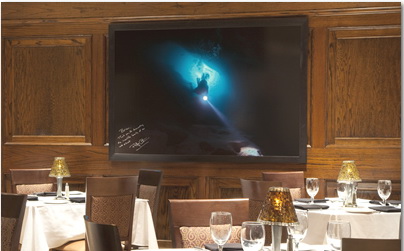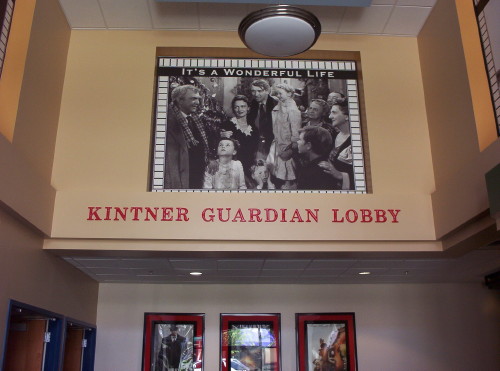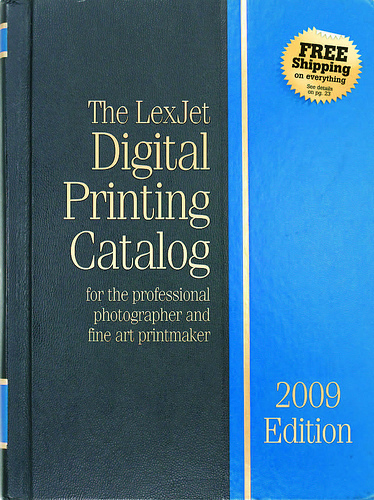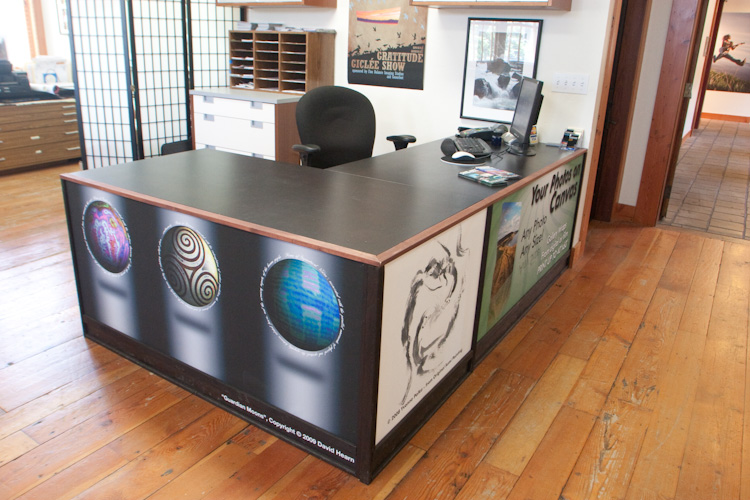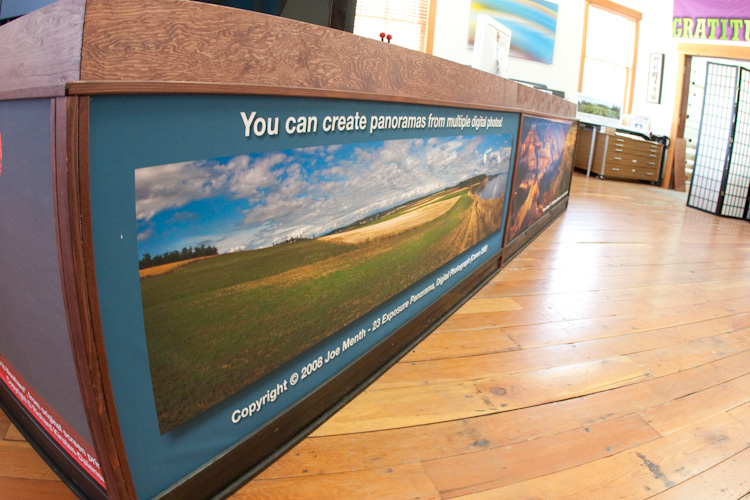By Eileen Fritsch
Editor, LexJet In Focus Newsletter
When I visit the Epson, Canon, and HP booths at photography-industry trade shows, I not only like to see what new products are being previewed or promoted but also how they are being promoted. That’s because press releases, tech data sheets, and brochures are often so dense with numbers, charts, statistics, and buzzwords that the practical, real-world value of the new products aren’t fully conveyed.
Certainly, facts, figures, engineering data, and gamut maps can help substantiate claims that a product is improved. But it can be extremely valuable to see new products being demonstrated or discussed from the perspective of the end user.
One of Epson’s goals at PDN PhotoPlus Expo this year was to visually document some of the benefits of their Epson Stylus Pro 900 series printers and UltraChrome HDR ink technology. They did this in two very creative ways: 1) through a new series of online videos, and 2) with an in-booth print-comparison display that also highlighted their newest art papers.
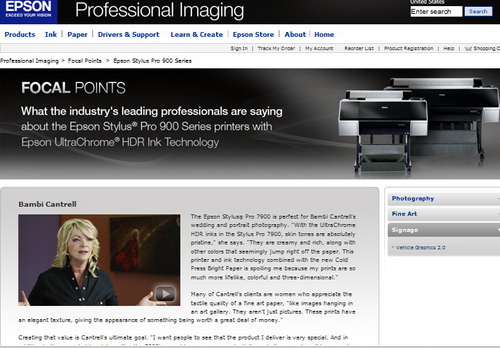 New Videos: On the day the PPE show opened, Epson announced the addition of seven new videos to their Focal Points website. In these videos, well-known photographers Bambi Cantrell, John Paul Caponigro, Douglas Dubler, Greg Gorman, Jay Maisel, Steve McCurry, and Jeff Schewe talk about the value of printing in general and the importance of printing big.
New Videos: On the day the PPE show opened, Epson announced the addition of seven new videos to their Focal Points website. In these videos, well-known photographers Bambi Cantrell, John Paul Caponigro, Douglas Dubler, Greg Gorman, Jay Maisel, Steve McCurry, and Jeff Schewe talk about the value of printing in general and the importance of printing big.
Their comments underscore a theme that resonated at PPE this year: Prints are the ultimate expression of a photographer’s vision and can provide a lasting legacy of a photographer’s career.
Another benefit some of the photographers talk about in the videos on Epson’s website is how well the UltraChrome HDR inks can print details and flesh tones even on matte papers.
One Portrait-Five Different Media Types: To illustrate the capabilities of UltraChrome HDR inks, Epson’s booth at PhotoPlus Expo displayed five identical portraits side by side. Each portrait had been printed on a different type of media. Four were printed on Epson’s new art papers (Cold Press Bright, Cold Press Natural, Hot Press Bright, and Hot Press Natural) and one was printed on Epson Exhibition Fiber paper for photography.
The portrait depicted an elderly gentleman, with a deeply wrinkled face, twinkly blue eyes and a healthy thatch of snowy white hair. He was wearing a comfy-looking black fleece pullover that draped in soft folds around his neck and shoulders. This particular image proved to be a visually powerful way to demonstrate how well the wide gamut of the UltraChrome HDR inks and Epson print technology could reproduce black, shadow detail, highlight detail, and fleshtones on five noticeably different media types.
If you haven’t visited Epson’s Focal Points website lately, check it out and take a few minutes to watch the videos. When the practical benefits of advances in technology are explained from the point of view of top artists, it’s much easier to understand the real-world value of the technical breakthroughs that get the product managers and engineers so pumped up.
If you’re interested in buying a 24-in. Epson Stylus Pro 7900 or 44-in. Epson Stylus Pro 9900 series printer, call one of the friendly account specialists at LexJet (800-453-9538). They can answer any questions you may have and tell you more about the many different ways LexJet customers are using these printers.
In future posts about what I learned at PhotoPlus Expo, I’ll talk about an eye-opening HP-hosted event (New Ideas, New Beginnings) and a fascinating software demonstration I saw in Canon’s booth.



